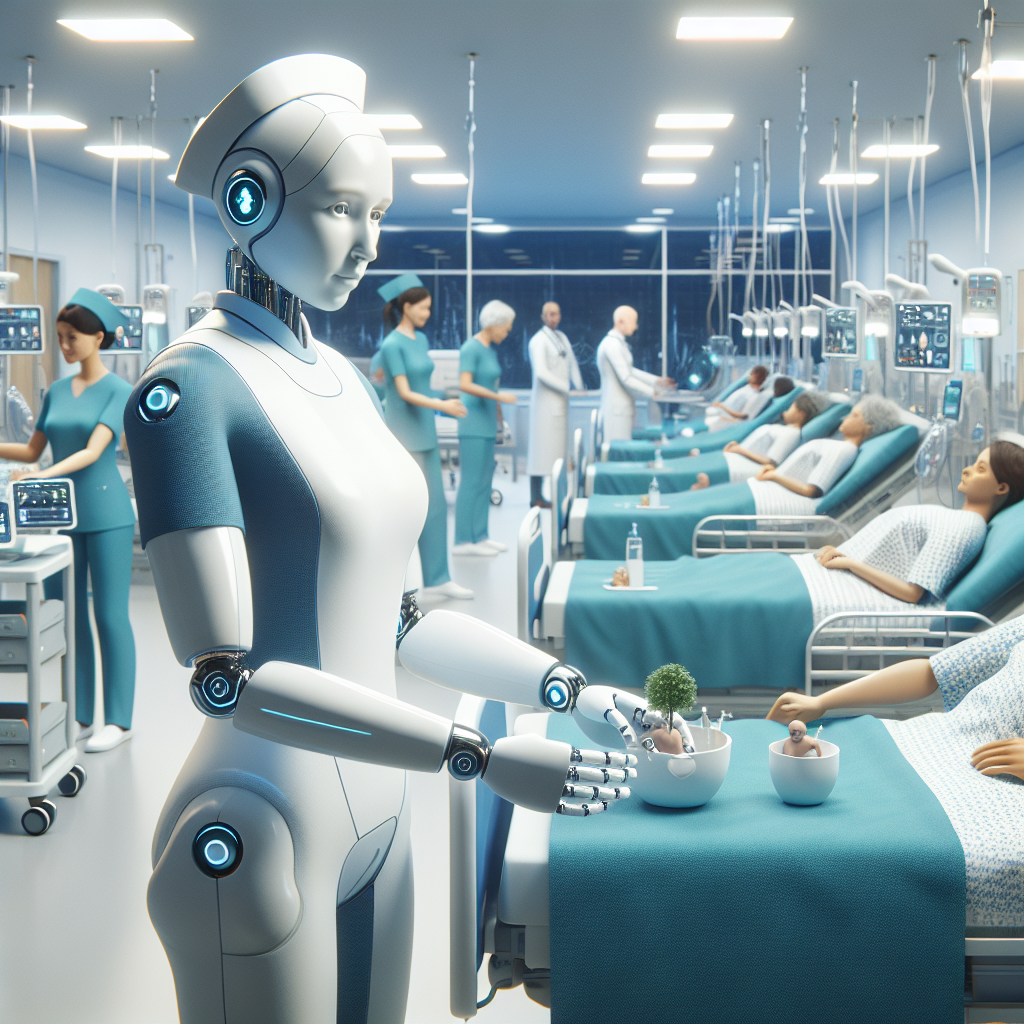
The global healthcare sector is currently grappling with a staggering shortage of labor, projected to reach a deficit of 4.5 million nurses by 2030, according to the World Health Organization (WHO). This shortage has created immense pressure on the existing workforce, with approximately one-third of nurses worldwide suffering from symptoms of burnout, including emotional exhaustion. The situation is dire, exacerbated by a historically high turnover rate within the nursing profession. However, emerging technology, particularly autonomous AI-powered robots like Nurabot, is presenting a potentially transformative solution to this crisis.
Developed by Foxconn, the multinational technology giant from Taiwan, Nurabot is an innovative nursing assistant designed to alleviate the burden on nurses by handling repetitive and physically demanding tasks. These may include activities such as medication delivery and guiding patients throughout the hospital facilities. Foxconn claims that as nurses integrate Nurabot into their workflow, they could potentially reduce their workload by as much as 30%. As Alice Lin, the director of user design at Foxconn, explains, “This is not a replacement of nurses, but more like accomplishing a mission together.” This collaborative approach aims to enhance the quality of patient care by allowing nurses to focus on more critical tasks that require human judgment and expertise.
Nurabot is currently being tested at the Taichung Veterans General Hospital in Taiwan and has been in development for just 10 months following its initial design. Testing began back in April 2025, and Foxconn is gearing up for a commercial launch anticipated at the beginning of next year. Although the company has not released pricing details yet, the implications of this technology could be monumental in addressing staffing shortages in healthcare facilities worldwide.
At the heart of Nurabot’s design is a collaboration between Foxconn and Kawasaki Heavy Industries, a well-known Japanese robotics firm. The advantages of this partnership are evident in Nurabot’s autonomous wheel movements and the ability to perform tasks with its robotic arms. To better suit the context of nursing, Foxconn conducted extensive research to identify the specific challenges nurses face in their daily routines, such as traversing long distances to deliver samples. As a result, Nurabot includes a compartment specifically designed for safely delivering medication and other important supplies between the nurses’ station and patient rooms.
The AI technology powering Nurabot stems from a combination of resources, including Foxconn’s own Chinese large language model for communication functionalities and cutting-edge AI infrastructure provided by NVIDIA. The American tech giant played an essential role in developing Nurabot’s core programming, employing a mixture of proprietary AI platforms that enable the robot to navigate hospital environments independently, as well as schedule tasks and respond to both verbal and physical cues of human staff.
Moreover, AI training and testing were conducted using a virtual environment representative of the hospital, significantly accelerating the development process. The advancements in artificial intelligence have allowed Nurabot to operate with a greater degree of autonomy and human-like behavior, enabling it to perceive, reason, and react adaptively to varying situations within a healthcare setting. David Niewolny, director of business development for health care and medical at NVIDIA, emphasizes that such capabilities allow Nurabot to adjust its actions based on specific patient conditions and contextual needs.
As Nurabot moves closer to its market launch, the pivotal question remains: will AI nursing robots like Nurabot serve as a help or hindrance in the healthcare landscape? While the technology promises to streamline operations and alleviate some of the burdens on human staff, concerns about the implications of increased automation could arise. Thus, industry leaders and stakeholders must closely observe not only the potential efficiencies created by technologies like Nurabot but also the ethical considerations and impacts on nursing professionals.
In summary, as the nursing profession faces unprecedented challenges, the development and integration of AI-powered solutions like Nurabot represent a significant step towards addressing the pressing issue of staffing shortages. As we move forward into an era where technology plays an increasingly prominent role in healthcare delivery, understanding the collaboration between AI and human professionals will be crucial in shaping a more effective and efficient healthcare system.

Leave a Reply